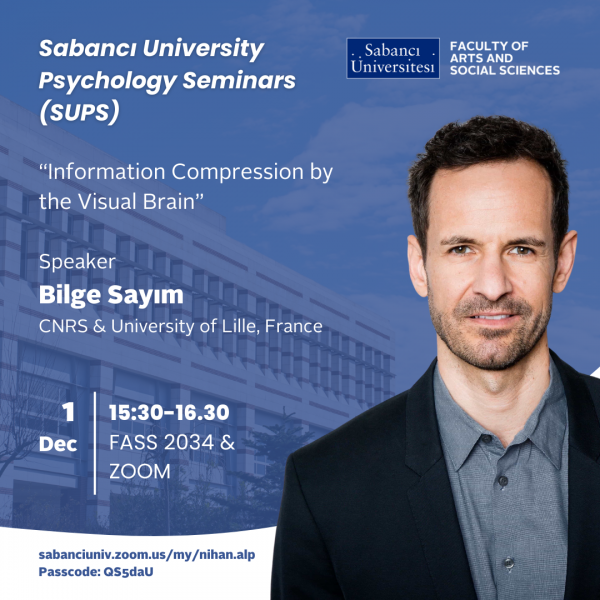Seminar: Bilge Sayım (CNRS & University of Lille, France)

Information compression by the visual brain
The human brain has limited processing capacities. To cope with excessive information in the environment, the visual system selects, discards, and compresses information. For example, in typical visual scenes, at any point in time only single (or subsets of) stimuli are selected by attention, reducing the information that needs to be processed. Another way to reduce information is the compression of redundancies that are present in visual scenes: In ‘redundancy masking’, a phenomenon we recently discovered, the perceived number of items in repeating patterns is reduced. For example, when presented with three identical items in the visual periphery, observers often report seeing only two items. Interestingly, observers are highly confident about the accuracy of their erroneous reports. Here, we will discuss how mechanisms of information reduction and the compression of visual information in redundancy masking are key characteristics of the visual system that enable efficient processing in complex environments.